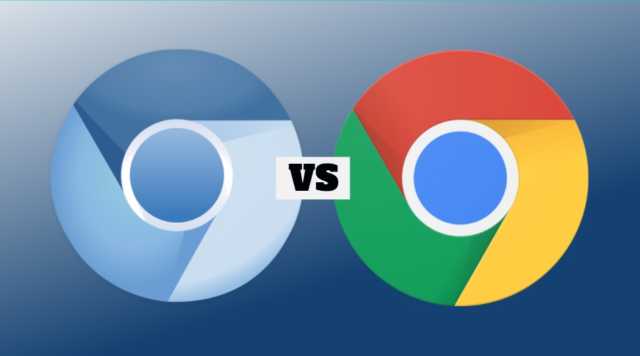What Is The Difference Between Google Chrome And Chromium Browser?
What Is The Difference Between Google Chrome And Chromium Browser?
Short Bytes: Google Chrome is a web browser developed and maintained by tech giant Google. Chrome uses the open source web browser Chromium’s source code and adds a bunch of features developed by Google and some nonfree components.
hromium is an open-source web browser developed and maintained by The Chromium Project. The git rolling release web browser was first introduced in 2008 and its different parts are released under different free software licenses which include BSD License (for the portion written by Google) and MIT License, LGPL, etc for other portions.
Google Chrome, also released in 2008, is a proprietary web browser developed and maintained by Google. The reason why Chrome and Chromium are tied to each other is that Chome borrows Chromium’s source code. You can differentiate Chrome and Chromium by looking at their logo, Chrome is colorful and Chromium is blue. However, that’s not the only difference between Chrome and Chromium.
Difference between Chrome and Chromium:
Automatic Updates
Chrome uses GoogleUpdate on Windows (GoogleSoftwareUpdateAgent and GoogleSoftwareUpdateDaemon on Mac) to automatically update to the latest version. It is not available for Chromium. On some Linux distributions, updates are made available via package repositories. Google Update is also used for other applications like Google Earth.
Usage tracking and crash reporting
Unlike Chromium, Google has added the crash reporting and send usage statistics options. Chrome sends data to Google servers. It includes general data like information about your device and OS, Chrome settings, visited websites having malware, search queries, etc. This allows Google to suggestions, results, and ads that are relevant to you.
Crash reporting and usage tracking can be disabled from Chrome’s settings.
Chrome Web Store
On Google Chrome, the functionality to add extensions outside the Chrome Web Store is disabled on all Windows and Mac Channels. However, the extensions can be added via developer mode.
Media Codec support
Chromium’s HTML5 audio/video codec support is limited to what is available as non-proprietary codecs like Theora, Vorbis, WebM, VP9, etc. In the case of Chrome, it adds support for some non-free stuff like AAC, MP3, and H.264 (now free).
Non-optional tracking
Google Chrome installer includes a randomly generated token. The token is sent to Google after the installation completes in order to measure the success rate.
Google also uses the RLZ identifier to track a user while Google search and using the address bar. The RLZ identifier stores information – in the form of encoded strings – like the source of chrome download and installation week. It doesn’t include any personal information and it’s used to measure the effectiveness of a promotional campaign. Chrome downloaded from Google’s website doesn’t have the RLZ identifier. The source code to decode the strings is made open by Google.
Sandbox
Both Chrome and Chromium have Sandbox support. It is always enabled in the case of Google Chrome. For Chromium, some Linux distributions may disable the Sandbox feature.
Adobe Flash Plugin
Although, this difference between Chrome and Chromium doesn’t matter much as Adobe Flash is being phased out for the newer HTML5. Google Chrome supports a Pepper API version of Adobe Flash which gets updated automatically with Chrome. Since it’s not open source, Chromium doesn’t support it out of the box like Google Chrome.
Chrome Vs Chromium: Which one is better?
It’s hard to decide which one to choose between the open source Chromium and feature rich Google Chrome. For Windows, it is better to use Google Chrome as Chromium doesn’t come as a stable release. And that applies for MacOS too.
In the case of Linux, known for its love for free and open source software, Chromium might be a better option. But you’ll have to live with the fact that it doesn’t update automatically, lacks Adobe Flash plugin and other media codecs. However, various Linux distributions may offer a modified Chromium adding various missing features. In fact, Chromium is now being considered as the default web browser in the many distros on the likes of Mozilla Firefox.
Google Chrome is also available for Linux and it is a good option if you are fine with some closed source cheese spread on your open bread.
Download Chrome and Chromium
You can download Chrome from the official download page provided by Google using this link:
Supported platforms: Windows, MacOS, Linux, Android, iOS
You can download Chromium using this official download page:
Supported Platforms: Windows, Mac, Linux, Android
Di you find this helpful, tell us in the comments below.

Comments
Post a Comment